Trending
New York’s top retail brokerages
The biggest NYC brokerages saw leasing activity plummet since TRD’s last ranking, but activity is finally starting to pick up
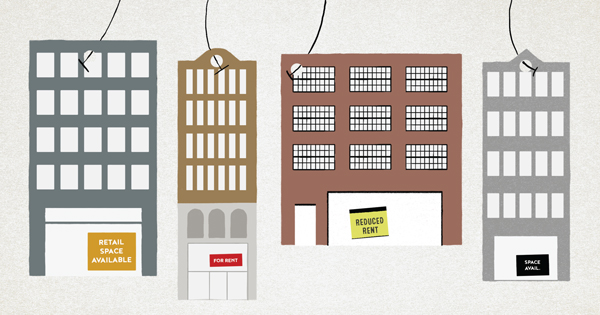
In one of Manhattan’s priciest retail deals ever, investor 60 Guilders and the Carlyle Group bought a 6,000-square-foot retail co-op at the corner of Spring and Mercer streets in Soho last year for $105.4 million.
To justify the $17,570-per-square-foot price, the investors would most certainly have to rent the 106 Spring Street space to a luxury fashion brand — the type that speculative investors once thought would pay north of $1,000 per square foot on the pricey stretch.
Today, the space is empty.
Meanwhile, on the opposite corner at 96 Spring, the growing athleisure brand Alo Yoga inked a deal for 14,000 square feet in November. Midwood Investment has owned the building since 1998, and with a low basis was able to rent it out with an asking price of $850 per square foot.
Three years into a market correction, sources say landlords who bought at pre-peak, nonspeculative prices are finally adjusting their rents. However, there’s still a stubborn slice of owners who bought at historic highs, who are now holding out for numbers that many sources say they are not likely to get anytime soon.
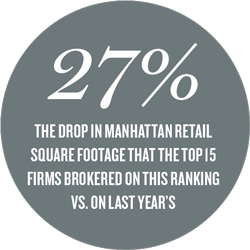 “The landlords that are able to are definitely adjusting pricing and showing more flexibility,” said Jedd Nero, executive managing director of the retail group at Avison Young. “Those who aren’t as a result of lenders they’re beholden to [are seeing that] their spaces are still sitting vacant.”
“The landlords that are able to are definitely adjusting pricing and showing more flexibility,” said Jedd Nero, executive managing director of the retail group at Avison Young. “Those who aren’t as a result of lenders they’re beholden to [are seeing that] their spaces are still sitting vacant.”
On the whole, it’s been a difficult year for the floundering retail market, which had been referred to as “fucked” by one prominent investor as recently as the spring. But sources say there’s been a significant uptick in activity in the last few months.
This month, amid that backdrop, The Real Deal ranked New York City retail firms by the amount of square footage they leased between October 1, 2016 and September 30, 2017.
In Manhattan, RKF clinched the No. 1 spot with 1.13 million square feet inked south of 126th Street, including deals like Nordstrom Rack’s 47,267-square-foot lease at the Durst Organization’s 855 Sixth Avenue. Taking the top spot was a big feather in the firm’s cap, given that so many other brokerages saw a drop in deals.
Meanwhile, Cushman & Wakefield and Newmark Knight Frank ranked second and third, with 904,206 square feet and 424,808 square feet, respectively. CBRE and Winick Realty Group rounded out the top five.
It should be noted that retail deals are notoriously hard to track because they are not logged in any public databases. As a result, TRD relied on firms’ submissions and news reports to determine totals. Not all firms participated. JLL, for example, declined.
But the numbers offer a window into a market that’s very much in flux. And this year, for the first time, TRD also ventured across the river to rank the firms brokering the most retail deals in Brooklyn.
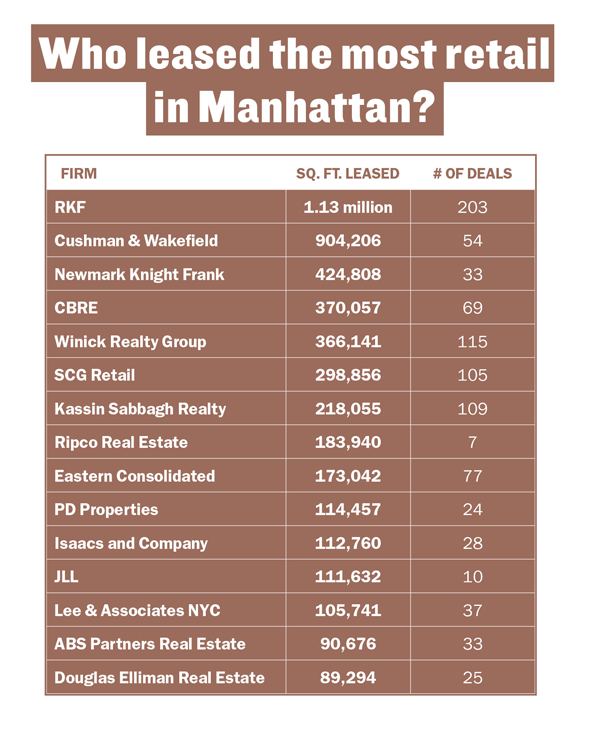
In that borough — where prime corridors like Broadway in South Williamsburg and Flatbush Avenue from Atlantic Avenue to Grand Army Plaza are seeing significant action — Winick took the No. 1 spot with 163,109 square feet leased. RKF and Ripco Real Estate ranked second and third, with 161,774 square feet and 134,473 square feet, respectively. SCG Retail and Kalmon Dolgin Affiliates rounded out the top five.
But even as the market continues to correct, the retail world is still far from out of the woods. Not only are portions of the market still struggling, but the entire sector is facing a moment of reckoning thanks to the internet.
CBRE’s Richard Hodos noted that while 2016 was all about retail “disruption,” 2017 was centered on “dislocation” as the effects of “omnichannel” retail took hold and in-store traffic continued to decline.
“We’ve yet to learn what the new normal is and what it looks like,” he said.
Eyes wide open
The top 15 Manhattan firms on TRD’s list leased 27 percent less on this year’s ranking than on last year’s ranking.
And major firms felt the pinch. For example, CBRE saw deal volume drop 74 percent, while Cushman’s volume declined 34 percent.
But some geographic segments may be doing better than others.
CBRE found that there were actually more retail transactions overall in the first three quarters of 2017 compared to 2016. But that was only for south of 96th Street and for generally larger deals.
While that may run contrary to TRD’s findings, what everyone seems to agree on is that brokers have recently started getting some relief as the deadlock between landlords and tenants has begun to give.
In addition, the oversupply of inventory has finally started to shrink.

Robert Futterman
During the third quarter, the number of available spaces on the borough’s top retail corridors fell by about 7 percent to 197 from a peak of 212 spaces at the beginning of 2017, according to CBRE.
Eastern Consolidated’s Robin Abrams — who left her longtime brokerage home, the Lansco Corporation, in May — said while retailers are still being cautious, they are back in the game.
“Finally, there’s some more flexibility, some meetings of the minds with deals being transacted,” she said. “A lot of these deals are fashion brands that I think had been in the market, then pulled out of the market or are new to the market. They’re all about doing deals that minimize risk.”
In Manhattan, that risk is being minimized by lower rents. Asking rents in the borough fell roughly 23 percent from the 2014 peak, according to CBRE.
Some of the biggest declines have been on corridors where rents had doubled between 2010 and 2014.
For example, lower Fifth Avenue between 42nd and 47th streets — which is home to H&M’s COS line, the NBA Store and Adidas — saw rents grow by 225 percent to $1,366 per square foot at their peak, CBRE’s data show. Those rents have since fallen by about 25 percent.
Times Square, meanwhile, has seen a more moderate drop, possibly because it’s been reinvented in the last few years with experiential retail concepts. Average asking rents in Times Square — defined as Fifth to Seventh avenues between 42nd and 47th streets — have fallen about 14 percent from their peak of $2,413 per square foot.
Just outside of that neighborhood, on Eighth Avenue, Lionsgate Entertainment recently inked a 45,000-square-foot lease for a movie studio and entertainment center at SJP Properties’ 11 Times Square. RKF’s Robert Futterman, Joshua Strauss and Scott Zinovoy were on both sides of the deal.
Brokers said that many of the tenants who sat on the sidelines when rents got out of control are starting to poke around.
“I’d say starting in about July or August, we started to see a lot more activity in the market,” said JLL’s Patrick Smith, who’s handling leasing for the retail component of Brookfield Property Partners’ massive Manhattan West project, where Whole Foods inked a 60,000-square-foot deal in March. “There seems to be a lot more proposals.”
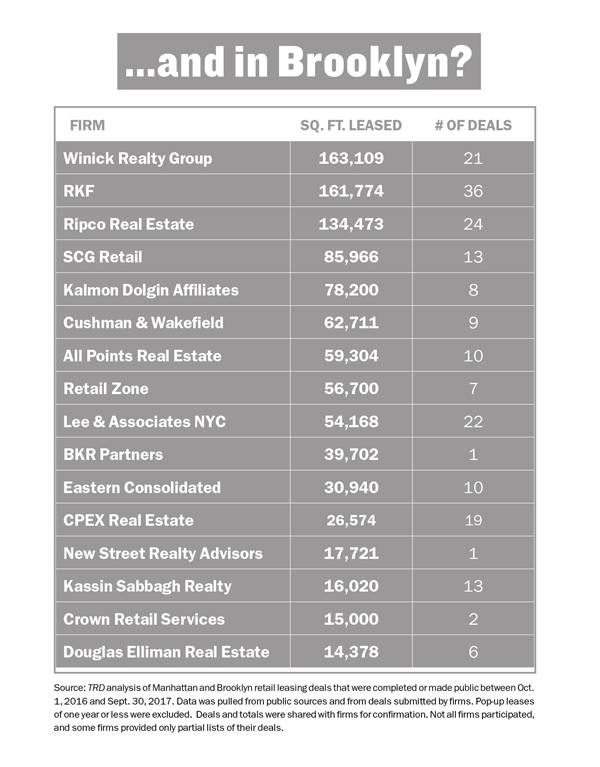
But brokers say asking rents don’t tell the full story of just how much the market is correcting. That’s because the gap between what rents are publicly advertised at and what they get locked in at has widened since the height of the market, when some deals were getting done above asking prices. Between 2010 and 2014, taking rents — aka the actual rent — ranged from 96 percent to 98 percent of asking rents on average, according to CBRE. But during 2017’s third quarter, that figure was 82 percent.
After a period of market melancholy, landlords are getting more aggressive (and creative) to finalize deals, retail experts said.
In addition to good old-fashioned concessions like more money for build outs, landlords are also throwing in longer periods of free rent. “In the last 12 months, a lot of landlords have become a lot more creative,” said RKF’s Karen Bellantoni. “The art of the deal has definitely changed.”
At 345 Fifth Avenue, which sits across from the Empire State Building, the food hall Frame Market inked a 15-year deal in September for 15,000 square feet. The space had a $400-per-square-foot asking rent. The landlord, Empire Management, kicked in $500,000 to build the space out and gave nine months of free rent.
“Because 34th Street has so many availabilities, [the landlord] gave pretty significant concessions,” said Douglas Elliman retail chair Faith Hope Consolo, who represented Empire. “[Frame is] getting a whole new storefront plus infrastructure work. They made a great deal.”

Jeff Winick
Steve Gonzales, head of retail leasing for TF Cornerstone, said the asking rent is just the starting point at the negotiating table.
“People don’t necessarily readjust their ask. It’s more like a whisper,” he said. “I may not have lowered my official ask, but depending on the deal and who the tenant is and all the concessions, I will think about it accordingly.”
Still, brokers said that when taking on listings, they’re very aware of which landlords have the financial flexibility to drop asking rents and which ones don’t.
At 106 Spring — the Soho space owned by 60 Guilders and Carlyle — that flexibility doesn’t seem to exist. A representative for Carlyle declined to comment, and 60 Guilders did not respond.
Joel Isaacs of the brokerage Isaacs and Company — who marketed the 96 Spring Street space across the street with David Baker and Josh Lewin — said his firm is taking on listings “conservatively, with our eyes wide open.”
“We want to take on assignments we feel we can lease, where we feel the landlords are not under tremendous pressure from lenders to achieve unachievable rents,” he said.
The retail return runway
Brooklyn might as well be its own city. Unlike Manhattan, where asking rents are dropping in most corridors that matter, Brooklyn is seeing retail prices climb in more places than not.
Asking rents in the borough increased on 10 of the 14 retail corridors tracked by the Real Estate Board of New York, according to a report released by the trade group in October.
Still, the dynamics at play in Brooklyn are different. For starters, the borough didn’t see the same run-up in pricing during the boom. In addition, several new megaprojects — like Greenpoint Landing and the Domino Sugar site, which will have 5,000 and 2,800 apartments when completed, respectively — are slated to add a lot of new retail to the market.
TerraCRG President Ofer Cohen — whose firm leased 5,760 square feet of retail during the period TRD reviewed — said there are areas of the borough where retail is on the rise. But, he noted, asking prices don’t necessarily reflect what’s truly going on with pricing.
“Asking rents are just a function of landlords’ mood swings,” he said.
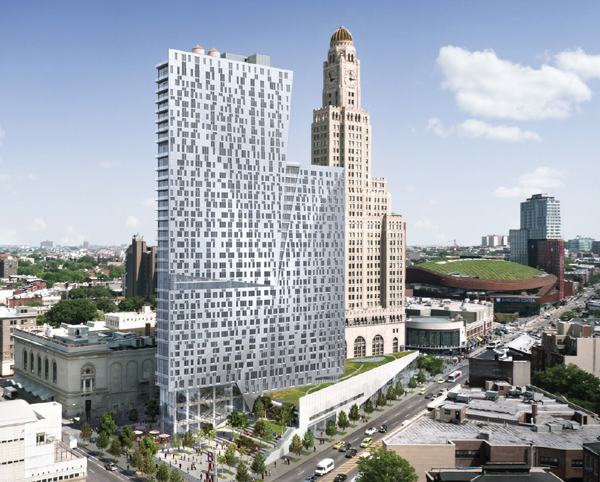
300 Ashland Place in Brooklyn, where the newest Apple store is opening.
Cohen pointed to Grand Street in Williamsburg, which REBNY found logged a 2 percent rent increase, as an example of a retail stretch on the ascent. In October, streetwear label Supreme opened a 3,000-square-foot store at 152 Grand.
“That area kind of started catching up with other corridors in Brooklyn,” Cohen said.
Other active areas include the Fulton Street Mall, Bushwick and Gowanus. And Apple, of course, is opening its second Brooklyn location, at Two Trees’ 300 Ashland Place in Fort Greene.
Mitzi Flexer, a director of retail in Cushman & Wakefield’s Brooklyn office, said retail values are increasing on the backs of new residential developments in areas like Greenpoint.
“A lot of new developments going in there need these retail tenants in the ground floor of buildings to keep people in the area and at the building,” she said. “They don’t want to put them in a building in the middle of nowhere. They want the same amenities as any other area of Brooklyn.”
Cushman, for one, was tapped by Ronald Dickerman of Madison International Realty this year to handle leasing at the 2.1 million-square-foot, 12-property retail portfolio the company will own outright by the end of this year. That’s when it’s slated to close a deal to buy partner Forest City New York out of its 51 percent stake.
The deal will put a $1 billion value on the portfolio, which includes high-profile sites in Manhattan and Brooklyn, including the Madame Tussauds location on West 42nd Street in Times Square and the Atlantic Center mall across from the Barclays Center.
Dickerman said that unlike with many prime Manhattan locations, there’s still plenty of financial upside at the Brooklyn mall.
“This is not $2,000-per-square-foot rents going to $5,000 per square foot. This is $30-$50 going to $100 per square foot. The narrative is very different here,” he said. “There’s a lot of opportunity to twist this project into the current century.”
Mixed blessings
While leasing activity has increased in 2017, there’s one big asterisk. Roughly 20 percent of the deals inked in Manhattan during the third quarter were short-term deals of three years or less.
In October, for example, Gucci signed on for a two-year lease at Pearlmark Real Estate Partners’ 375 West Broadway, which was marketed by RKF’s Beth Rosen, Jackie Totolo and Robert Cohen.
The luxury fashion label took 10,700 square feet, with an option to extend.
David Firestein of SCG, which ranked No. 6 in Manhattan and No. 4 in Brooklyn, said landlords and tenants both see advantages in these short-term deals.
“There’s still a big delta in rents, and although landlords have gotten much more receptive, they don’t want to make those adjustments for 10 or 15 or 20 years,” said Firestein, who represented Starbucks’ Italian-bakery offshoot Princi in the retailer’s first deal in the city, for 2,600 square feet at Paramount Group’s 1633 Broadway. “They’re willing to do it on a shorter period and live to fight another day.”
Whether those deals get converted into long-term leases remains to be seen.
Untuckit, an online-born men’s shirt store that launched in 2011, recently extended its lease by three years at 129 Prince Street, where it opened its first outpost in September 2015 and is paying roughly $500 per foot. Cushman & Wakefield’s Michael O’Neill and Taylor Reynolds brokered the renewal.
But even as the company signs long-term leases in other parts of the city — it recently committed to a 10-year deal in the Flatiron District — it’s still testing out Soho.
Eastern Consolidated’s Abrams called these short-term deals a “mixed blessing.”
“We as brokers think it’s better than having this disconnect where nobody’s executing on anything. At least they’re creating some energy,” she said. “I don’t think we know yet how many of these are successful, because we’re literally at the beginning of this.”
Where are the comps?
So is retail, indeed, “fucked, plain and simple,” as developer Billy Macklowe declared at a real estate forum in April?
Empty storefronts still plague the city, and systemic changes like the impacts of e-commerce, millennial shopping trends and retail bankruptcies are changing the landscape.
But despite those cold, hard realities, some argue that Manhattan’s retail struggles are still just the result of natural economic market cycles, and once rents drop even further, activity will return to normal.
“What I find, is at the right price everything rents,” said Colliers International’s Brad Mendelson, speaking at recent REBNY event.
However, Richard Wagman, managing partner of landlord Madison Capital, said he thinks online shopping is causing a very real retail shift nationwide.
“Even in New York, don’t forget what’s happened over the past five years is that everyone has converted every side-street doctor’s office or ground-floor office building to retail spaces. That doesn’t have to be retail,” he said. “That shouldn’t be retail in every corridor in the city.”
JLL’s Smith told TRD that the biggest challenge now is assessing comps, because while activity has increased there are still not a lot of deals to assess. Without strong comps, he said, it’s hard to read the market.
“If somebody’s going to ask me what the rent is going to be in a particular corridor, you just kind of shrug your shoulders,” he said. “If you asked me what my wish for a holiday gift is, it would be transactions in these markets.”
Research by Ashley McHugh-Chiappone
Correction: An earlier version of this story undercounted RKF’s Manhattan deals and did not include CPEX Real Estate in the Brooklyn ranking.




